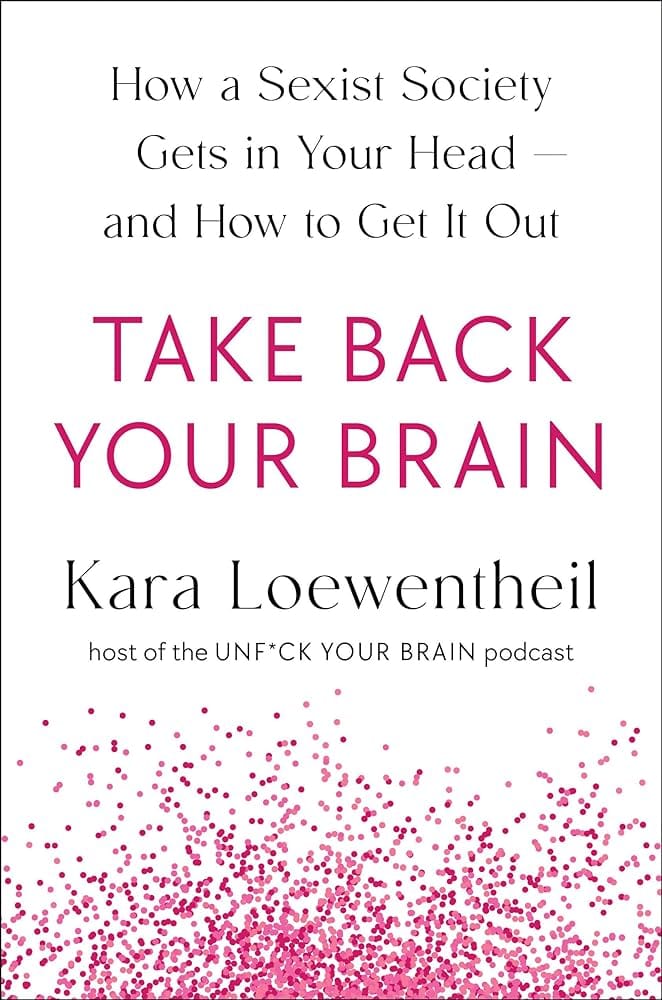How You Think About Yourself Can Be Your Superpower
"To the outside, my life looked great. But inside, I felt like I was being held hostage by a voice that was a cross between a middle school bully and a disapproving English governess," Kara Loewentheil writes in her new book, Take Back Your Brain: How a Sexist Society Gets in Your Head—and How to Get It Out, an instant bestseller. Loewentheil is referring to a high point in her career: She'd just landed a role as a reproductive rights litigator, a dream job she'd been working toward for a decade. She had a Harvard law degree and an impressive resume—but her brain kept telling her, You have no idea what you're doing. Who do you think you are? Negative self-talk was a river in her mind. There had to be a different way, she thought.
There was, and it began with taking charge of her thoughts. Loewentheil left her dream career and became a master-certified life coach. Today, she works with thousands of women, helping them to move through limiting self-beliefs. She pays particular attention to what she calls "the Brain Gap" in women, the gap between what we want to believe and the internal messaging ingrained in us by a sexist society. "We always think that whatever we're doing isn't enough," she tells us, "Or that it isn't impressive, or that there are reasons for our success that aren't our own ability."
While Loewentheil's work focuses on women, she acknowledges that men also grapple with limiting internal messaging. "The societal conditioning we all receive, regardless of gender, particularly in American society, is that life is about constant success and feeling good. And if we don't meet these standards, something's gone wrong," she points out.
Take Back Your Brain is Loewentheil's attempt to help women harness their power within and bridge that Brain Gap so that they can finally feel truly empowered. We sat with her recently to discuss just how critical a role our thoughts play and how we can start to create a more self-compassionate and empowering mindset.
Because as Loewentheil shows us, how we think about ourselves can be our greatest hindrance or our biggest superpower.
Self-Criticism Is Everywhere
"It's like our brains are the eternal snake oil salesman," says Loewentheil. We often think that when we reach a milestone (e.g., When I just get to this weight or If I just landed this job), we will finally feel good about ourselves, but that is not the case. "You could be a lawyer or a stay-at-home mom; it doesn't matter," she adds. "Your brain has been programmed by society to always be criticizing yourself."
We Must Close the "Brain Gap"
Loewentheil says many of us struggle with competing thought patterns: what we actually think and feel (e.g., I don't deserve this role) versus what we know we should think and feel or at least want to think and feel (e.g., I deserve this role because I am intelligent, capable, and I worked for it). The key is to close the gap by self-programming our brain to think the beliefs we want to have and know are true. "Over time," says Loewentheil, "those [self-empowered thoughts] become the strongest track and the other ones wither."
How We Think Is How We Live
Ever wonder why your inner monologue is so essential? Every behavior in our lives begins with a thought. So, either way, good or bad, we are investing our mental and emotional energy into something, says Loewentheil. So, why not put it toward thoughts that produce the outcomes you want in your life??
To illustrate this, Loewentheil likens our thinking to an investment return. "You can either let that money fall into a checking account with very low returns, or you can invest that money on purpose into the equivalent of a high-yield savings or good investment account where you are choosing what I want to create in my life and how I can use my thinking to power that."
To Change Your Thinking, Remember Your Humanity
Loewentheil uses various tools in her work to help people change their thinking. One simple practice (which she credits learning from yoga teacher Judith Hanson Lasater) is to follow any self-critical thought with the phrase, How human of me.
For instance, if you think I am ashamed about my actions, you can follow it with …How human of me. This short phrase is powerful because it reminds yourself of your own humanity, says Loewentheil. "It is a shortcut to self-compassion. Even if you think, I'm afraid to look at my thoughts…. you can say, I'm afraid to look at my thoughts... How human of me."
Consider a "Thought Ladder" to Create New Neural Pathways
It takes work to develop new thought patterns, says Loewentheil. You can't just stop thinking an old thought; that's "because your brain is evolutionarily pre-predisposed to want to believe that it's already right." Instead, you must wire a new neural pathway—essentially, create a new thought or thought pattern and practice it.
To do this, Loewentheil recommends a practice called the "Thought Ladder." It provides an incremental pathway to help you move from a negative, sabotaging thought to a positive one.
Here's how to do it: Draw a simple ladder on a piece of paper. On the bottom rung, write down a thought that is making you feel bad that you'd like to change. (Be honest, says Loewentheil, because you're thinking it anyway.) At the top rung, jot down the thought you'd ultimately like to have. An example could be: "I don't like my arms" at the bottom and "I love my arms" at the top.
Next, explore intermediary thoughts you can work up to and jot those down in the middle of the ladder. Loewentheil says to aim to make these middle-rung thoughts 10 percent more positive (or "10 percent less shitty") than your current thought. These could include How my arms look doesn't define me and Maybe I am being too critical of my arms. Then, focus on how you feel when you think these. The test, says Loewentheil, is whether you feel some relief and a bit better with each new thought. With time and practice, you can work your way up the ladder.
"The thought ladder is designed to help you think a small thought that you can actually believe, and also, to help you break out of the perfectionist thinking, which leads to trying to repeat something too positive you don’t believe and then giving up altogether ," she says.
"A lot of what we're trying to do is create the space between your brain saying something and you having a reaction to it," Loewentheil continues. "People often think thought work is all about changing thoughts. It's actually 20 percent changing thoughts and 80 percent changing your relationship to your thoughts."

Kara Loewentheil is an Ivy League women's rights lawyer turned Master Feminist Coach, practical philosopher, and the founder of The New School of Feminist Thought. She hosts the internationally top-ranked podcast UnF*ck Your Brain: Feminist Self-Help for Everyone. Learn more at schoolofnewfeministthought.com.




